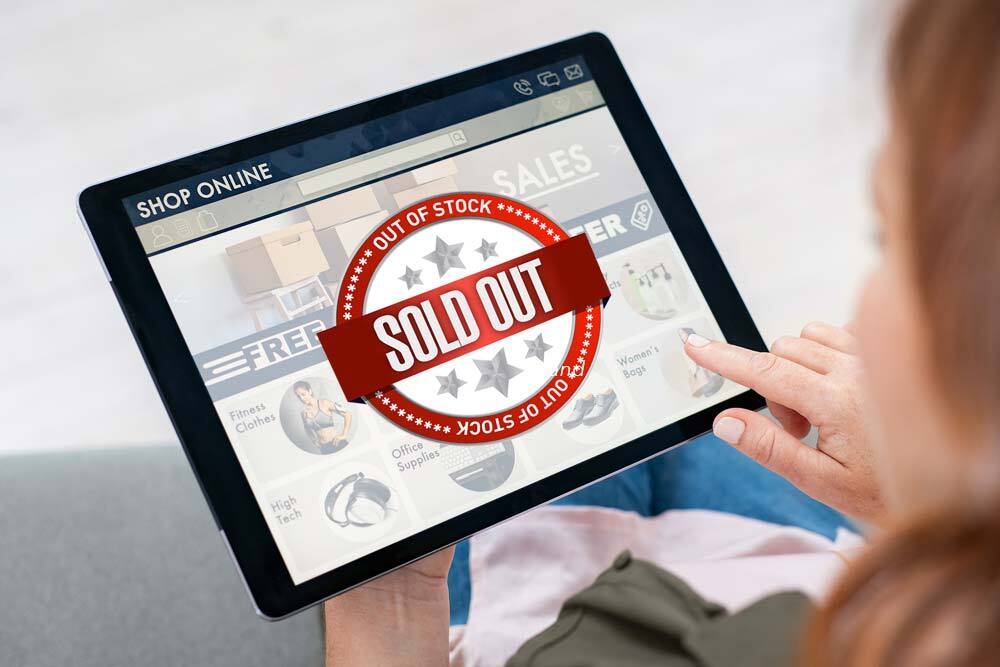Being out of stock of an item is a source of friction and frustration for a shopper.
It’s easy to do well and get a great Net Promoter Score (NPS) score when your commerce operation runs smoothly. It’s more challenging to provide a superior customer experience when there are exceptions, such as out-of-stock items. It is how these out-of-stock situations are handled that can build or damage your brand image.
The last thing any retailer wants is for shoppers to question, “Do these people ever order from their site?” or “Who tests their website?”
Inventory first becomes important when a shopper is on the Product Display Page (PDP).
If your store has sold the last item on-hand, do you simply show “Out of Stock,” or do you offer to inform the shopper when the item comes back into stock? Allowing the shopper to enter their email address and request to be notified provides you with demand information. Understanding that 100 customers have all signed up to be notified when a particular item comes back into stock allows you to review your orders with suppliers to see if you need to order more.
When a shopper places an in-stock item into their cart but gets distracted by work or family or needs more time to finalize their purchase decision, the item’s availability information can become stale. As other online shoppers place orders for the same item and the warehouse inventory quantity is updated to reflect orders from in-store and other channels, what happens if the item goes out of stock?
Sites start to deviate in terms of their ability to handle more complex out-of-stock situations.
When a shopper reviews their cart, some sites will check each item’s inventory and automatically remove items that are no longer available and inform the shopper. This automatic removal leaves the cart in a state where all items in the cart can be checked out. Some will update the inventory status of the items in the cart, but force the shopper to remove the out-of-stock items before they can proceed to order checkout. This process is a little less helpful but at least ensures that the cart is in an acceptable state before the shopper starts the checkout process.
The least helpful sites keep the shopper oblivious until the end of the checkout process when they are informed that some item(s) in the order is out-of-stock.
And sometimes, the error message received after hitting “Place Order” is general, vague, and cryptic with no pointers towards inventory stock levels. The shopper will have entered shipping, billing, and payment information only to find out that one or more items in their cart can no longer be purchased.
Online sellers work to create a sense of urgency and a Fear of Missing Out (FOMO) to motivate shoppers to “buy now.” That’s all fine when inventory is in-stock and check-outs are running smoothly. However, when a sense of urgency is created and shoppers become frustrated since they don’t know why they can’t check out, they will think twice about following through on the check-out impulse again.
Great CX is rewarded with sales, volume, and brand equity. Great CX is scalable and worth investing in.
Pivotree has developed a proprietary Friction Scoring system to help online sellers analyze their customer experience and determine where best to remove friction so that business Key Performance Indicators (KPIs) will improve. Whether it’s identifying and fixing stock-out issues, customer data, supply chain, or security – Pivotree is the only end-to-end provider supporting clients from strategy, platform selection, deployment, and hosting through to ongoing support.
The Frictionless Future of Commerce: How to Get Ahead of Evolving Customer Expectations
The last year accelerated the development of commerce technology, as the pandemic forced an undeniable reckoning for many businesses still clinging to legacy systems.
The gap between digital commerce winners and laggards has widened — but digital business leaders face new opportunities to recover and thrive.

